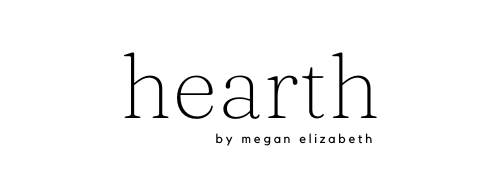How to Create an Instagram Landing Page
Most of us know the frustration of only being able to add one link to Instagram, especially if you’re a blogger. You want to include your blog link, but then what about your social media or a specific page on your blog you want to share with your audience? There are tools such as Linktree which allow you to create a custom landing page, but the issue is that this takes traffic away from your blog because another platform is hosting your links page. The solution? It’s actually really easy to create your own Instagram landing page on your blog, so you don’t lose any traffic.
I tried various design methods for mine, but decided that the Elementor plugin was the best tool to use. Elementor is a page design tool which uses drag and drop blocks, which makes it easy to customise pages according to your preferences.
You can only use Elementor if you have a WordPress self-hosted blog.
Getting Started
Create a new page and add a title. I just called mine Instagram Links, but whatever works for you is fine. Then click edit page with Elementor and your screen should change to Elementor editing screen.
Note: You can’t use Elementor with Microsoft Edge, so make sure you have a browser like Google Chrome available.
Creating a Blank Page
The first thing I did was go to settings and change my page layout to Elementor Canvas. This gives you a blank canvas to work with. Essentially, your landing page won’t include any headers or footers, and only the links on your landing page will be seen. Plus it looks much neater and works better on a mobile screen. As it’s for Instagram, it’s likely that viewers will access your page from the mobile app.
Choose Elementor Canvas on the drop down list
Personalising Your Landing Page
The downside of using the Elementor Canvas layout is that it gets rid of your blog header including your blog title and any logos/introduction images. This is easy to fix though. You can add a heading and image widget to the top of your page to replicate your blog header. Elementor gives you access to Google fonts so you can use the same or similar font to your blog branding. For my image, I chose to add a photo of me, rather than my site logo to make it a bit more personal.
For the title or any text on Elementor, there are different tabs when you are editing. Content is where you write everything, but if you want to change the font, colour etc. then just head to the style tab.
Add a title to mimic your blog header
Buttons
The main element of landing pages are the links to your blog/social media that you want to include. But how to create those buttons that match your branding.
Luckily, Elementor also has a drag and drop button widget which makes life a lot simpler.
All you need to do is add the button label e.g. Visit the Blog and then add the link you want that button to lead to. For example, for my ‘Visit the Blog’ button, I added my homepage link. Again, to change the colour, font and general look of the buttons, just go to the style tab next to content. Elementor makes it really easy to stay on brand because you can use your custom brand colours.
It’s worth practising designing one button until you are happy with the appearance, and after that add as many buttons as you wish.
Button settings
Social Icons
While you can still use the buttons widget for your social media, I prefer the purposely designed social icons widget as it looks neater and all your socials are on the same line. Plus, you can still have the same style as your main link buttons by editing the colours etc.
Easily add all your socials with the social icons widget
Preview Before You Publish
That’s it really! Just before you hit publish, preview your page to make sure you are happy with the formatting. There’s a little computer screen picture at the bottom of the Elementor toolbar which gives you the option to preview the page in desktop, tablet and mobile mode.
Once you’re happy with everything, you can publish and have your very own landing page. Just don’t forget to change the link in your Instagram bio to your new landing page.
If you want to see what my landing page looks in my detail, click here.





